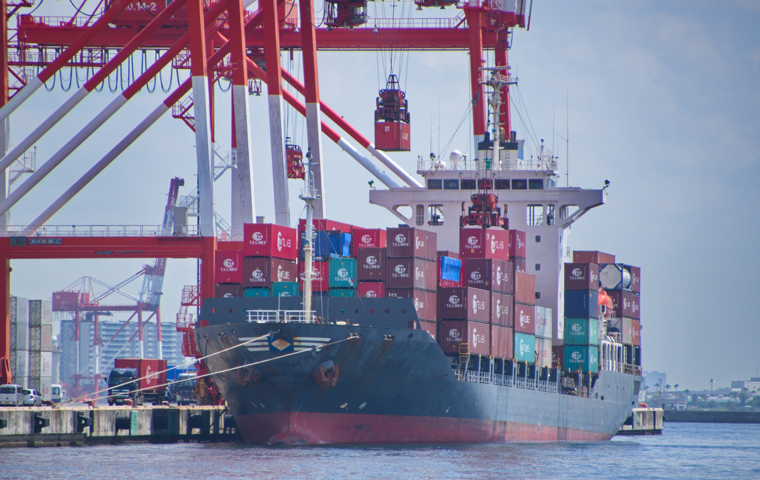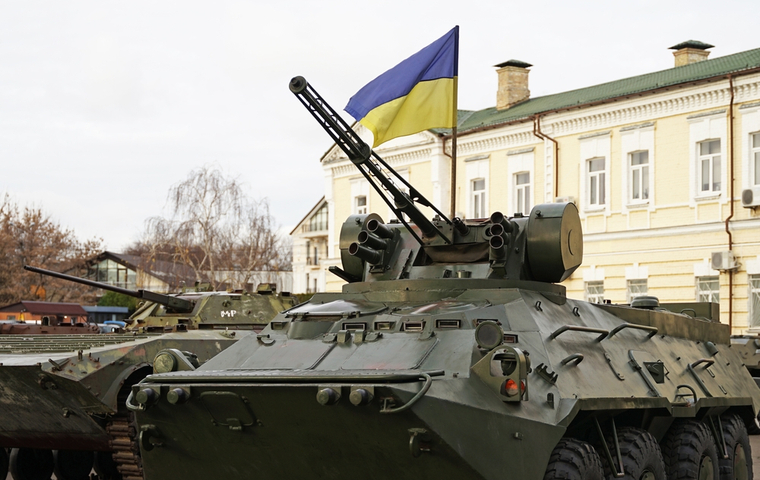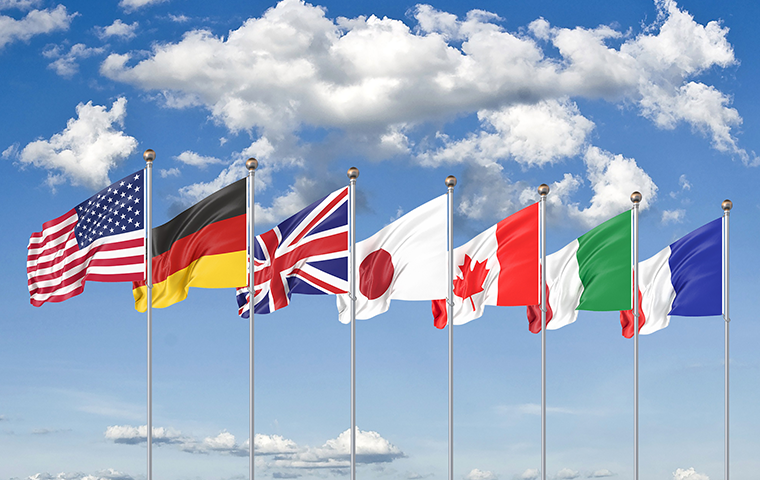A New Phase in U.S.–Japan Tariff Talks: An Alliance at a Crossroads
Related Articles
On May 1, 2025, the governments of Japan and the United States held the second ministerial meeting on tariff negotiations. This was not a routine trade dialogue. Following the results of the 2024 U.S. presidential election, President Donald Trump’s return to office under his “America First” trade doctrine has ushered in a crucial phase that could fundamentally redefine the economic relationship between the two nations.
Despite the diplomatic tone of official statements highlighting “constructive discussions,” the atmosphere at the negotiating table was tense. In reality, Japan found itself waging a defensive battle against unprecedented economic pressure.
At the heart of these talks lies the Trump administration’s distinctive worldview regarding trade deficits. The administration equates trade deficits with a loss of national wealth, operating on a binary belief that any country running a surplus with the U.S. must be using unfair practices to steal American jobs. By this logic, even long-standing allies like Japan—whose trade surplus with the U.S. remains large—risk being treated as “adversaries.” This zero-sum view transforms negotiations from a pursuit of mutual benefit into a contest of winners and losers.
Washington’s most powerful bargaining chip is a concrete and formidable threat: the potential imposition of a 10–20% blanket tariff on all imports. Even more concerning, this measure can be executed unilaterally by the president under U.S. trade law, without congressional approval. Thus, the tariff threat looms not as a mere tactic, but as a real and actionable policy option weighing heavily on Tokyo.
This asymmetrical power dynamic fundamentally alters the structure of negotiations. Backed by global leverage, the U.S. seeks specific concessions from Japan, transforming a bilateral discussion into a one-sided squeeze. Consequently, Japan’s focus is no longer on expanding market access but on defending its core industries from punitive tariffs. This confrontation transcends economics—it challenges the very nature of the U.S.–Japan alliance. The key question before the world is how far Washington will go in applying economic coercion to its most vital security ally. The outcome will determine whether the alliance remains a partnership of cooperation or morphs into a hierarchical relationship based on power.
Unresolved Issues: Auto Tariffs and the Incompleteness of the 2020 Agreement

To understand today’s crisis, one must revisit the 2020 U.S.–Japan Trade Agreement (USJTA), which came into effect in January 2020. That deal was not a solution but a temporary truce, postponing the most difficult issues. The roots trace back to the Trump administration’s withdrawal from the Trans-Pacific Partnership (TPP). This exit left U.S. agricultural exports disadvantaged in the Japanese market compared with TPP-11 (CPTPP) member competitors like Australia and Canada, sparking strong pressure from Trump’s agricultural base and hastening a bilateral deal.
The 2020 accord was essentially a “Phase One” agreement, meeting nearly all of Washington’s short-term demands. About 90% of U.S. agricultural products saw tariffs reduced or eliminated, giving them parity with CPTPP countries—an undeniable victory for American farmers. For Japan, gains were limited. While some industrial and agricultural tariffs were reduced, Tokyo’s main benefit was a verbal U.S. assurance to refrain—at least temporarily—from invoking Section 232 of the Trade Expansion Act to impose additional auto tariffs.
The deal’s most serious flaw was its failure to address tariffs on automobiles and auto parts, which form the backbone of Japan’s export economy. The annex explicitly stated that such tariffs would be “subject to further negotiations on elimination.” In effect, a time bomb was embedded within the agreement. Japan had traded away early concessions in agriculture to buy time on the auto issue—but this strategy left Tokyo structurally weakened. The U.S. had already secured its agricultural gains and could now exploit the unresolved auto tariff clause as fresh leverage. In hindsight, that promise of “further negotiations” was less a pledge of cooperation than a postponement of conflict.
“Farms vs. Cars”: Domestic Constraints Shaping Both Sides

At the heart of the tariff battle lies a clash between two politically and economically crucial sectors: American agriculture and Japanese automobiles. This is not merely an exchange of goods but a collision of domestic power structures and national identities—issues too deeply rooted to be resolved by economics alone.
On the U.S. side, powerful agricultural lobbies representing meat, soybeans, and dairy are the driving force. For these groups, Japan is a premium export destination. The Midwestern farm belt, Trump’s political stronghold, demands the restoration of market access lost after the TPP withdrawal. Their pressure makes agricultural liberalization an unwavering red line for Washington.
Japan’s top priority, meanwhile, is clear: protecting its auto industry. The sector—directly and indirectly employing millions—forms the pillar of Japan’s economy, and any erosion of its competitiveness would deal a national blow. Analysts warn that high U.S. auto tariffs could drag down Japan’s GDP and severely disrupt global supply chains. Avoiding such tariffs is thus an absolute imperative for Tokyo.
At the same time, Japan faces the domestic challenge of protecting its agricultural sector, long dominated by powerful lobbies like JA-Zenchu (the Central Union of Agricultural Cooperatives). Rice, in particular, remains a political sacred cow, symbolizing food security and cultural tradition. While Japan has gradually opened markets for beef and pork, further concessions—especially on rice—would provoke fierce political backlash.
This dynamic creates a near-impossible equation: the U.S. demands expansion in its most politically sensitive export sector, while Japan must defend its most economically vital industry and its most politically sensitive domestic market. The “farm vs. car” struggle is therefore not just economic but symbolic—a contest over national identity. For Americans, expanding agricultural exports means protecting “the heartland.” For Japan, defending rice symbolizes sovereignty and tradition. Even when an economically rational compromise exists, it risks being politically untenable if portrayed as “defeat.” This enduring contradiction obscures any clear landing zone for the talks.
Global Stakes and Japan’s Path Forward: The Alliance at a Crossroads
The outcomes of the current ministerial meetings will reverberate far beyond bilateral trade—they could reshape the stability of the global economy and the geopolitical balance in the Indo-Pacific. Several scenarios are conceivable, each with far-reaching consequences.
In the worst-case scenario, negotiations collapse and Washington imposes new tariffs on Japanese automobiles. Experts note that the U.S. might bypass its earlier promise by invoking Section 301 of the Trade Act instead of Section 232. Such a move would hurt both sides: Japan’s GDP would take a significant hit, while American consumers would face rising car prices.
Conversely, a “grand bargain” could emerge—Japan makes politically painful agricultural concessions in exchange for a permanent, binding exemption from auto tariffs. While such an outcome could be hailed as a diplomatic success, it would exact a heavy domestic political cost. Alternatively, the talks could again produce only a temporary deal, deferring the auto issue and perpetuating uncertainty that undermines investment and long-term planning for Japanese industry.
Most fundamentally, this negotiation highlights that security and economics are inseparable. Under Trump’s transactional worldview, economic friction can directly undermine alliance trust. For the U.S., Japan remains the cornerstone of its Indo-Pacific strategy against China; launching a trade war with its closest ally would be strategically self-defeating. Yet Japan now faces a painful dilemma: being economically pressured by the very ally that guarantees its security.
These talks serve as a stress test for the entire postwar alliance system the U.S. built. Japan, having revived the TPP as the CPTPP after the U.S. withdrawal, has sought to uphold a rules-based global order. But if Washington shows it is willing to use economic coercion even against its most loyal ally, that would send a chilling signal to the world: America’s security umbrella is no longer unconditional—it comes at a price.
Such a shift could prompt nations to rethink overreliance on the U.S., accelerating moves toward multilateral and diversified diplomatic frameworks. Thus, the outcome of the U.S.–Japan tariff negotiations will determine not merely the fate of trade, but how the value of alliances is redefined in an era of growing global uncertainty. Japan’s diplomacy now stands at a historic crossroads.



